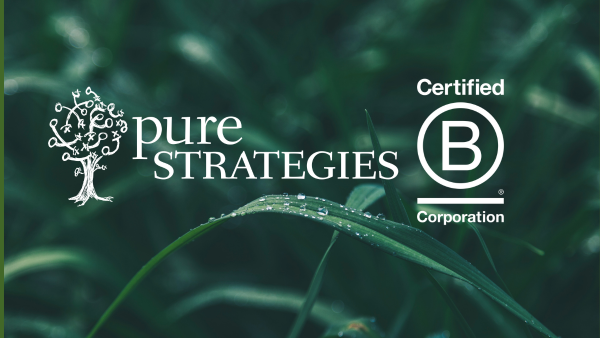How does a company determine which products to prioritize when developing a strategy for reducing cradle-to-grave greenhouse gas impacts?
Conducting full life cycle assessments on every product category may be too costly and take too long. But in the absence of real data, it is difficult to determine how to proceed.
Seventh Generation, a pioneering household products company, conducted an innovative study to shine a light on the carbon impacts of its operations and supply chain. As a first step in addressing their 2016 goal of reducing GHG emissions by 15% across the life cycle of their products, they asked Pure Strategies to estimate the cradle-to-grave carbon impact of their suite of offerings. The results provided valuable insights into the products and phases that contribute the greatest amount to the company’s overall carbon footprint.
The greatest impacts, by far, come from the consumer-use phase of their laundry and dish washing products. This wasn’t a complete surprise, as these two categories represent a good chunk of the company’s sales. Seventh Generation has developed consumer engagement and education strategies to reduce these impacts. But still, the results are remarkable. Even if the estimates are off by 10%, the priorities for the company are clear: consumer behavior for two product categories drives the company’s cradle-to-grave GHG impacts.
Setting aside the use phase for laundry and dish detergents, the study found that the second tier of carbon reduction opportunities lies in manufacturing the company’s laundry ingredients, diapers, and paper products. This gives the company a scientific basis for its product development efforts to plot its strategy and meet its climate goal.
Here are the key steps for creating a product-level assessment of company GHG emissions:
-
Select prototype products to represent each product category (e.g., 100 oz. laundry detergent, 180 count box of wipes, Size 3 diapers, etc.).
-
Gather bill of materials data for the product and packaging and estimate the cradle-to-grave impacts of making those raw materials using life cycle inventory (LCI) datasets.
-
Use LCI datasets, supplier data, and other published sources to estimate the GHG impacts of the remaining life cycle phases.
-
Transform the analysis for each representative product into the entire category and scale by the sales volume for the category. This approach is modest in terms of financial resources – roughly the cost of a full blown life cycle assessment for a single product. And it provides companies with a desperately needed strategy for figuring out where to focus their product sustainability resources.
To learn more about developing your own product GHG strategy, contact Pure Strategies at info@purestrategies.com.


